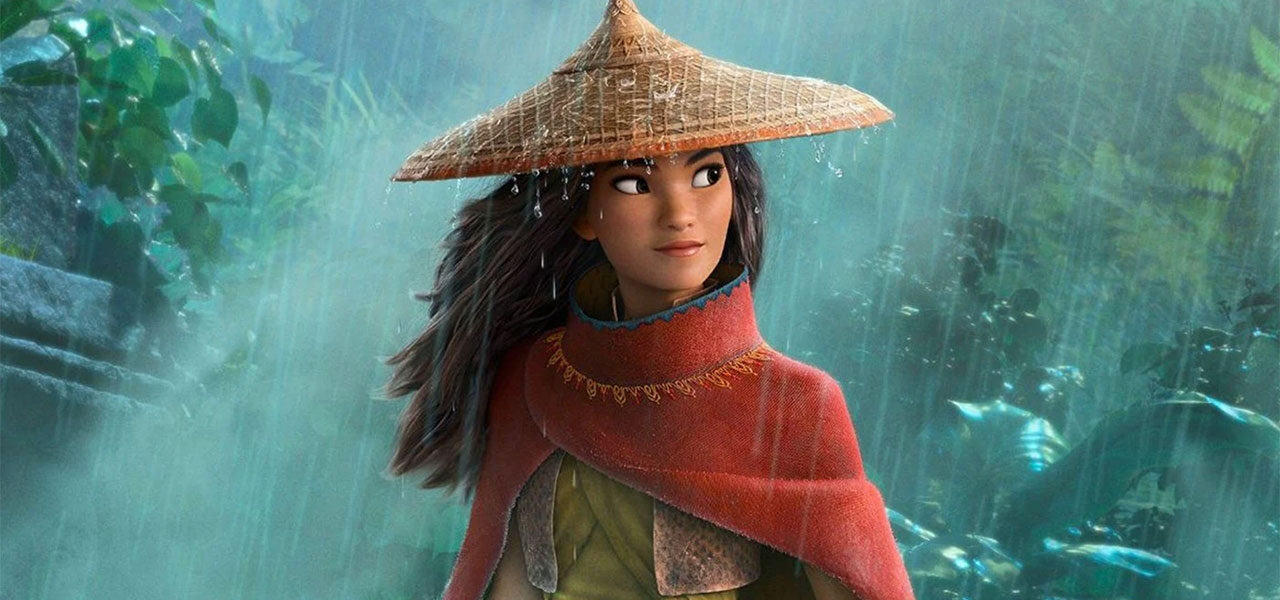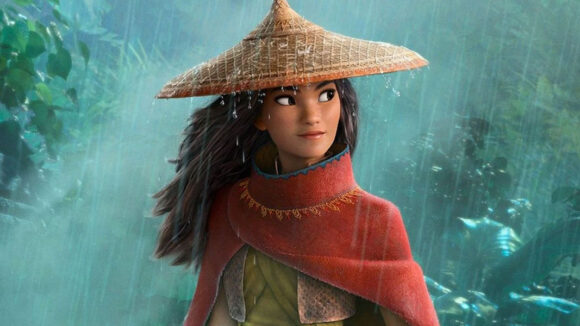

‘Raya and the Last Dragon’ Reviews: Critics Generally Positive, Despite A Reliance On Formulas
Disney’s latest feature, Raya and the Last Dragon, marks the latest entry in the Disney princess lineup. It comes out today in select theaters and on Disney+ via Premier Access, which has an additional cost of $29.99. Subscribers who don’t want to pay the extra cost will have to wait until June 4, when the movie will become available to all subscribers of Disney+ at no charge.
Here are the trailer and synopsis below:
Raya and the Last Dragon takes place in the Southeast Asian-inspired world of Kumandra, where humans and dragons lived together in harmony. The dragons sacrificed themselves to save humanity from sinister monsters called Druun. Those same monsters have returned 500 years later, prompting warrior Raya to track down the last dragon and stop the Druun for good.
While it’s safe to say that most films experience production woes, between being shifted to remote work mid-production, and a slew of key leadership changes including directors, producers, and the lead voice actor, Raya seemed to struggle a little more than usual behind the scenes. That didn’t seem to negatively affect the film too much, as critics’ reviews have generally been positive. With a current critic score of 95% on Rotten Tomatoes, Raya seems to be striking a cord with reviewers who are praising the visuals, performances, and its core message of trust.
Many praise Raya herself, as well as the “antagonist” of the film, the formless entity known as the Druun, which many felt serves as a mirror to today’s issues, from what the world will look like post-pandemic, the ongoing threat of climate change, and even a post-Trump America.
The most common criticisms of the film cite Disney’s reliance on formulas (albeit enjoyable ones), as well as some mixed ruminations on culture (particularly the salad-bar mix of various Southeast Asian cultures, which split many critics) and how that mixes with Disney’s global marketing strategy of attempting diversity while still playing it safe.
There were also criticisms that Kelly Marie Tran, Raya’s voice actor, was the only main cast member of Southeast Asian heritage. Tran, who is of Vietnamese descent, stars alongside a cast that are mostly of East Asian descent, specifically Chinese and South Korean, which again speaks to the ‘almost, but not quite there’ sentiment regarding cultural depictions. Below is a roundup of commentary from films critics.
Justin Chang praises the timely themes and more nuanced messages for the Los Angeles Times:
The question at the heart of the movie is whether people at odds can ever learn to trust one another, let alone lay down their lives for one another, and submit to the realization that their fates are ultimately entwined. There are certainly worse lessons a movie could impart under present circumstances, and the filmmakers ponder it here with disarming sincerity and seriousness. They also set up an implicit clash between two moral considerations — the will of the individual vs. the good of the collective — that seems to arise organically from the East-West cinematic fusion cuisine being prepared here.
Angie Han at Mashable criticizes the film’s formulas while simultaneously celebrating the results:
It’s easy enough to guess from the get-go where this is all headed, and in case you’re still struggling to keep up, Raya has a habit of repeating pertinent plot points or explaining scenes we just saw. Fortunately, the journey isn’t all that much less enjoyable for being somewhat predictable — if anything, there’s satisfaction in its tidiness, like clicking together the pieces of a jigsaw puzzle.
And when they do come together at the end, Raya reaches new heights (with a soaring musical theme to match). The idea that trust is the key to a better world isn’t exactly new, and this film not exactly subtle about it; the characters explicitly give voice to it multiple times. But it works as it’s executed here, with clarity and compassion. Raya understands just how big an ask trust can be if you’ve been burned before — and in between its playful shenanigans and zippy action sequences, it extends to the despairing a gentle reminder to hope, to heal, to reach out to others and try to become whole again.
AV Club’s Danette Chavez praised its handling of carrying on through grief and survivor’s guilt:
When Raya And The Last Dragon takes the time to ruminate on grief and recovery from trauma, it meaningfully distinguishes itself from the rest of the princess oeuvre. Just as unique as the film’s world-building is its sense of hope burnished by loss, not undermined by it. Only the Disney boilerplate messaging—believe in yourself/others—obscures the power of this moving tale and how it captures, intentionally or not, a specific form of sorrow.
Beatrice Loayza, while generally positive, comments on Raya’s place in the Disney canon for the New York Times:
The Disney treatment, like the Druun itself, seems to neutralize whatever it touches, no matter how hard it works to preserve the distinctive elements of the non-Western cultures it has brought under its label, especially recently. Is Disney paying tribute to these cultures? Or are these cultures instruments of corporate strategy? Places as different as Mexico (Coco), the Polynesian Islands (Moana) and now Southeast Asia are flattened along the Disney continuum, with each feeling like one in a collection.
Alison Willmore speaks to the film as a continuation of Disney’s own brand of progressivism, and penchant for extended universes in Vulture:
As Disney enters its ninth decade of animated features, the company’s been making gestures toward sociopolitical relevance in addition to repositioning its princesses as independent heroines and opening its animated universes up to be more inclusive. Zootopia was an unmistakable if imperfect allegory about racism; the Frozen sequel pitted its royal sisters against their own kingdom’s colonialist legacy. But however intentional the timing, Raya and the Last Dragon is on a level all its own — a dystopian saga that feels disorientingly primed for a release at the tail end of the pandemic, under a president who ran under messages of healing and unity. It’s a movie that takes place in a landscape ravaged by a plague, and one in which, we’re told, the only chance at a future appears to depend on its characters figuring out how to overcome the tribalism that’s splintered their nation. Who could ever relate?
Richard Lawson praises the film’s emotional depths in Vanity Fair:
The film also has a rich emotional timbre that’s unusual for an action-adventure, though less so for animated films. Raya is about a land—a nation? A planet?—riven by cataclysms both environmental and societal, a once verdant, peaceful place reeling in postlapsarian fallout. Raya’s chords of loss and melancholy blend well with its more fanciful elements, all given vibrant body in achingly gorgeous animation. It’s a fun movie, packed with escapades and just-shy-of-cloying cutesy humor, but there is a resonant depth, too.
Raya and the Last Dragon is directed by Don Hall (Big Hero 6), and Carlos López Estrada (Blindspotting). It is co-directed by Paul Briggs and John Ripa, and produced by Osnat Shurer and Peter Del Vecho. It was written by Qui Nguyen (Peg+Cat) and Adele Lim (Crazy Rich Asians).
